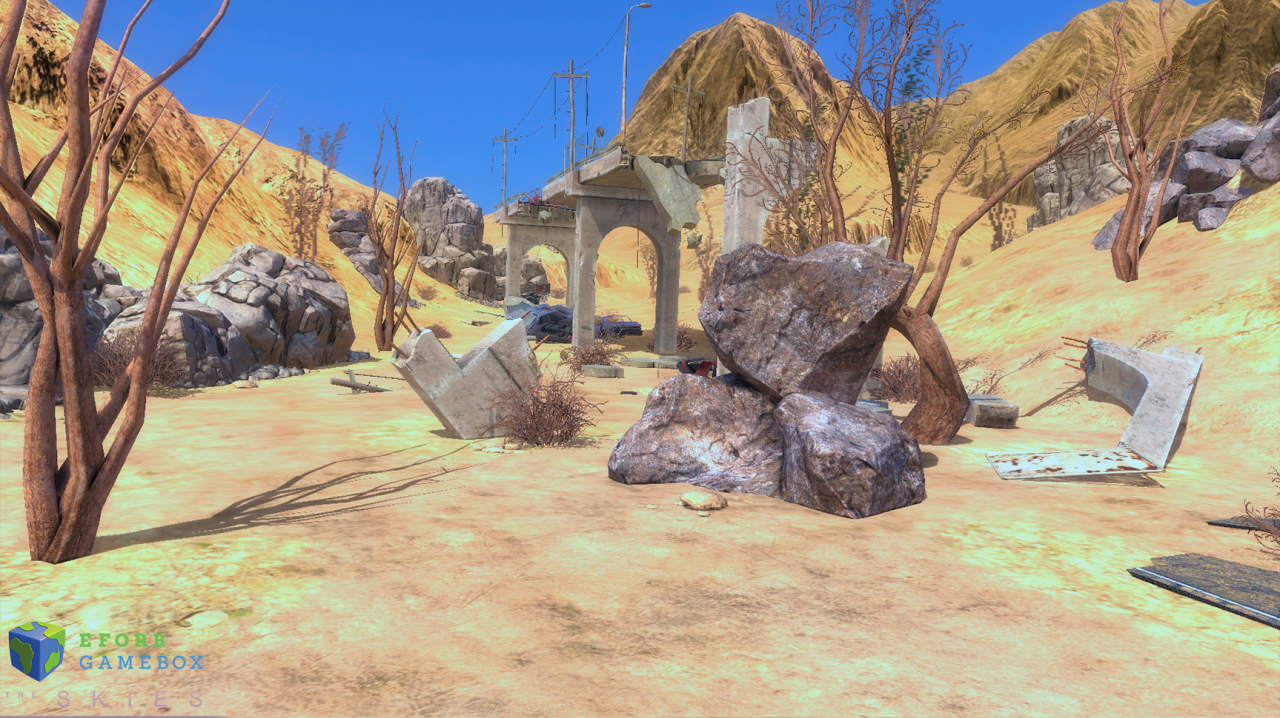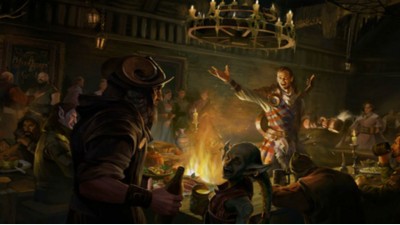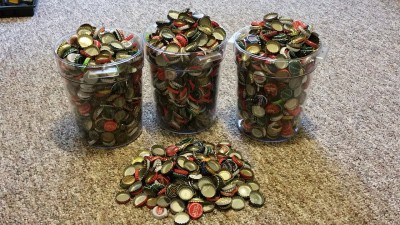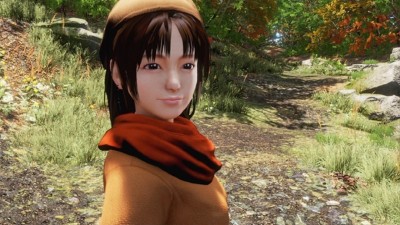Last week, Anton Paramonov from The SKIES developer Eforb Gamebox wrote a guest column for Continue Play, discussing some of the team’s experience working in Ukraine over the last few years - including during the annexation of Crimea by Russia.
This week, I was lucky enough to be able to put a few questions to Anton about the game and some of the features players can expect if the game meets its funding target on Kickstarter. So far that’s unfortunately looking unlikely, it has to be said - The SKIES has currently only managed to raise a little over $4,500 of its $350,000 goal with just 10 days left to go. It would be a shame, because The Skies actually looks rather interesting - a post-apolyptic, first-person MMO with shades of Fallout 3 about it, set in a desert wasteland. What’s on show in the video on their Kickstarter page is obviously early stuff, but it’s already looking rather interesting, and some of the weather and lighting effects are very attractive indeed.
Read on for a bit more about The SKIES.
CP: Obviously, you’re going to be compared to Fallout. Has that series been on the forefront of your mind throughout development? And if so, have any of the mechanics from either the Black Isle era of the franchise or the Bethesda era influenced the mechanics of The SKIES?
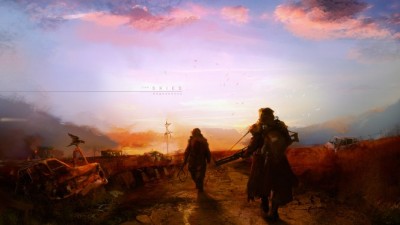 Anton: Fallout is an awesome game with its own identity and direction. While we were inspired by it to a degree, our main concern was implementing our own stories and socio-economic systems within the MMO genre. Most modern war games could easily be considered Call of Duty clones. We don’t focus on survival mechanics as much as plot dynamics and adapting strong single- player elements for the multiplayer space. As the player, you’re free to build a home, venture off into the wasteland or even rob a caravan.
Anton: Fallout is an awesome game with its own identity and direction. While we were inspired by it to a degree, our main concern was implementing our own stories and socio-economic systems within the MMO genre. Most modern war games could easily be considered Call of Duty clones. We don’t focus on survival mechanics as much as plot dynamics and adapting strong single- player elements for the multiplayer space. As the player, you’re free to build a home, venture off into the wasteland or even rob a caravan.
CP: As a small indie developer, building an MMO is a relatively ambitious task. What’s the background of your team, and how confident are you that you can deliver on your promises?
Anton: We’re aware it’s an ambitious task. It was a difficult project to commit to and announcing this early was also a big decision. We actually have most of what we need to complete the project but we want to be completely transparent and share the development process with the community, as they’ve already shown they believe in not only the game but us as well. It might seem that we’ve appeared from nowhere but we’ve actually been preparing to announce this project for a long time, it’s been a rough road but we’re finally ready.
Personally, I joined the industry 10 years ago as a programmer before moving into 3D animation and eventually design roles. That path has afforded me a comprehensive understanding of the whole game development process from both technical and creative viewpoints. Five years into my career, I wrote a post-apocalyptic novel for a contest hosted by the Deadland online community. I was already envisioning it as a game but it wasn’t until I met Anton Ustimenko, founder and director of Eforb, that the dream started to become a reality. We began to gather a team and spent the next several months writing an extensive game design document detailing all aspects The SKIES project.
Every single member of the team is an enthusiast. We’re not a huge company where people come to work in the morning and focus on a small piece of someone else’s idea without any real input then leave in the evening. A lot of us worked like that previously, but now we’re a start up, an independent studio working on our own dream day, night, weekends, during dinner, on our commute, at the cafe, everywhere. We love what we do and we’re doing everything in our power to hold onto that. There’s already so many contributors and supporters who believe in The SKIES. It’s a big responsibility for us to realise that dream.
CP: So far, the screenshots show an environment that is largely desert-based. How much variety will there be in the final game?
Anton: We’re trying to achieve a sense of romanticism with that post-apocalyptic desert before providing variety with a number of unique buildings, NPCs, effects, animation - the living world in general. Plus there’ll be a bunch of 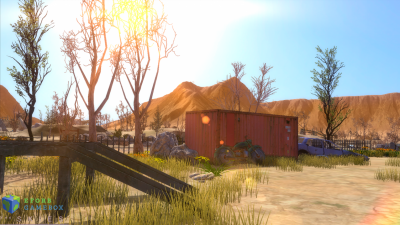 underground locations, dungeons, PVP locations, etc. that are all different.
underground locations, dungeons, PVP locations, etc. that are all different.
CP: What’s the tone you’re going for in the soundtrack? Orchestral, electronic, or anything else?
Anton: The music was one of the first aspects we decided upon. Right at the start I knew what I thought it should be and everyone so far has said, “Yes, that’s The SKIES”. It’s going to be a mixture of Arabian and Tribal motifs. I’ll send a few examples over for you to get an idea.
CP: You describe The SKIES as being non-linear. It took Bioware over 5 years to make Star Wars: The Old Republic - a game which lives in infamy as the most expensive game ever made. In what way do you think you’ve managed to improve on (or match) their efforts?
Anton: Of course, we don’t want to repeat the same experience as The Old Republic for players, but we also don’t think that non-linear aspect is what wholly defined that game, there’s a lot that played into it. It’s hard to compare them and ourselves at this stage.
To be honest, dialogue and plot is the most difficult task for us at the moment. Having written the book, I never expected it to be so difficult for others to understand the narrative and really feel of the world. It’s taken some time but we’re working hard to realise that non-linear aspect by developing the world, history, characters, struggles and destinies.
CP: Can you list some of the games that have inspired or influenced the team over years, and why?
Anton: Fallout, naturally. Neverwinter Nights, S.TA.L.K.E.R., Baldur’s Gate and other RPGs. They all pulled us deep into those worlds for days and nights. I haven’t felt that same sensation from modern games in quite a while.
CP: What kind of business model are you planning on for The SKIES? The Kickstarter campaign doesn’t really mention it.
Anton: The SKIES is free-to-play, moreover it features very little monetisation. There’s no pressure to pour your life savings into it. DOTA 2 is a good example of monetisation, in which items and upgrades are entirely optional rather than a necessity.
CP: Most MMOs feature a crafting system, but there is very little detail in your pitch about that, if it even exists in The SKIES. Are you able to elaborate a bit more on this area?
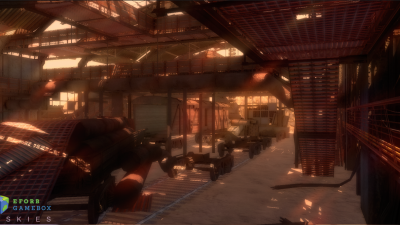 Anton: The crafting system consists of four levels: Resources, materials, production and upgrades.
Anton: The crafting system consists of four levels: Resources, materials, production and upgrades.
- Resources – basic elements for production. They are extracted by players or produced at special resource points such as mines, pits, farms, etc. Various combinations of basic elements are used to produce elements of the second level.
- Materials – the second stage of production. Players can find materials in certain places, they can also be produced from resources in special workshops.
- Weapon, armor, medicine, food, shells, etc. These are objects of the third level, obtained by use of materials. They can be produced at special factories. They are the final products, which a player gets.
- Improvements for weapons influence their parameters. Weapon can be improved in special workshops. Production system allows players to control the world economy. You’ll find more about that in an article about the economy. Each player can produce elements of any level. Production is influenced by several parameters of the role system, which can be developed by a player in order to achieve better results.
Weapons have up to 5 slots for improvement and each type of weapon has its own improvements. Players can modify their weapons by themselves or in workshops. These improvements add new modes of fire and pointing, they also extend the range of weapon’s functions, such as damage, reloading, pointing accuracy and so on.
Both armor and weapons are produced from the standard materials, but to produce unique items you’ll need additional materials, which you’ll have to find. We don’t want to apply the sandbox principle in production like in similar games of the genre. We strive to make this scheme more user-friendly and also engage offline users in production system – so that a player can go to bed and be sure that in the morning his character will earn money at the factory and new weapon or resources will appear at the market.
CP: While understanding that as a small indie developer your funding is limited, how big is the game world going to be, and how do you plan on keeping things interesting and varied? Do you have plans for post-release geography and additional content?
Anton: We’re laying out 8km² for launch and intend to update the game with new locations and opportunities in the future.
CP: What kind of system specs are you aiming for with the game?
Anton: It’s hard to provide minimum system requirements as we’re still in alpha, but I’d estimate 2 GB RAM, 512 MB video card and processor from 2011 or later. We’ve taken optimization into consideration from the very beginning - the 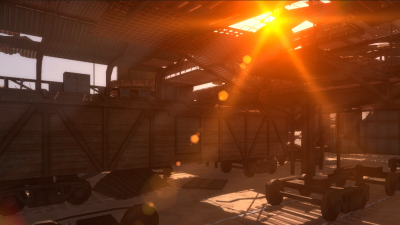 team knows how important it is for a large project so I’m constantly encouraging them to improve.
team knows how important it is for a large project so I’m constantly encouraging them to improve.
CP: Merging the RPG and FPS genres can be tricky - the RPG genre typically leans towards random number generation, while the FPS genre is obviously more skewed towards real-time aiming and twitch reflexes. How are you balancing the different demands and mechanical quirks of the two?
Anton: In terms of the combat system, there are parameters for each weapon which increases the statistics through usage. While some players will have better optimised weapons, others will have specialised characters with the ability to set traps and more. This means that there are ways for lower level players to overcome higher level players by using different skills and strategies. Personally, I thought the mixture of FPS combat and RPG mechanics in Fallout 3 wasn’t entirely successful so we’re working to avoid repeating those mistakes.
CP: What engine are you using for the game, and what made you decide on it above the other popular industry engines?
Anton: Unity was the obvious choice for us. It offers us a lot of flexibility and the ability to work quickly. If the game is successful and the demand is there, we might want to change engines at some point. On the other hand though, Unity 5 may provide a whole new opportunities for us.
